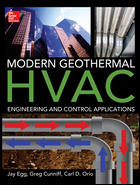Refrigeration systems often support perishables vital to your customer's business. The contractor becomes a vital link to their customer's success, similar to electric and telephone utilities. Compared to install and maintenance, repairs are most demanding because they are unpredictable and not planned for. Contractor responsiveness and efficiency is key. Responding quickly and effectively to a customer's crisis can directly lead to repeat business and recommendations. For the same reasons, repair work is also challenging to manage in terms of costs and customer satisfaction.
While electrical wiring and air circulation continue to be sources of headaches, more problems in today's A/C and refrigeration systems are within the refrigerant circuit. The chemistry between the new exotic refrigerant blends and oils is relatively new to the entire industry, causing more unexpected incompatibilities and service mistakes. It is generally recognized that some uninformed technicians may have dropped R-410A into R-22 systems. As a result of service mistakes due to inexperience, systems can develop toxic brews in their refrigerant circuit. A thorough diagnostic is often needed to make sure these problems are found on the first service call.
Technicians often use wallet pressure/temperature (P/T) cards in working with new blends, which requires manual math calculations to interpolate table entries. Sometimes, they use P/T correlation to identify or confirm the refrigerant in the system. This process is mistake prone and not precise enough to distinguish between similar replacement blends, possibly leading to accidental refrigerant mixing.

Air conditioning systems often get very little attention to their subtle problems until they become compressor failures. But R-22 systems have the highest compressor failure rates! Many refrigerants contain the element fluorine in their structure. In the presence of minute amounts of moisture and air, reactions create hydrofluoric acid, capable of eating through glass. Since motor windings are silica based, their insulation is extremely vulnerable. For prevention, subtle problems such as liquid floodback from a plugged evaporator coil, high superheat from plugged condensers, or short charged systems must be spotted early on and consistently. Again, these problems are difficult to see using Bourdon tube gauges.

Precise view of the pressure fluctuations allows technicians to quickly spot out-of-envelope operating conditions and the exact nature of the problem. Symptoms such as a dirty condenser/evaporator, TEV hunting, or small amounts of liquid floodback, typically difficult to find with Bourdon gauges, all have small sub-psi pressure fluctuation patterns. With the right tool, these patterns are clearly seen, so your technicians make the proper repair right away without guesswork.
An integrated vacuum and pressure gauge is handy for everyday troubleshooting. Typically, readings in inches of mercury are sufficient. A micron vacuum gauge should be used when eliminating moisture or checking for system leaks using a deep vacuum draw.
Automatic SST display eliminates one error-prone step of the important superheat calculation. Further, after refrigerant substitution, even drop-in replacements like R-407C for R-22 requires some metering adjustment. Sometimes neglected by the substituting technician, the 5 degrees F of superheat difference is significant and easily missed by subsequent service workers. If the technician sees the small SST change, he would make the adjustment and the compressor may be saved from seizing or burnout. These situations are similar across different applications, from residential to commercial rooftops to supermarkets.
Finally, do not underestimate the image of your firm in your customer's mind. Combined with professional, courteous staff, the use of modern, well-kept tools leaves a positive impression about your professionalism, helping them remember you the next time they need service.
Air conditioning and refrigeration systems today are vastly different than those with the classic refrigerants from years ago. Technicians need the proper tools to speed up installation and troubleshooting, to offset the extra information and possibilities to consider. These needs can be met with modern electronic tools that give accurate information quickly, such as the Digital Refrigeration System Analyzer (DRSA) from Digi-Cool Industries. Similar to investments in information technology and communication, contractors need to invest in state-of-the-art HVACR tools to remain competitive in the changing service landscape.
Doug Lockhart, A.Sc.T, is an HVACR contractor and founder of Digi-Cool Industries Ltd., Duncan, British Columbia. For more information, e-mail info@digi-cool.com or visit www.digi-cool.com.
Publication date: 08/09/2004







